I am always trying my best to think up something new and interesting to share with you here on the blog. I love our Best 3 Games with…Series but I have done so many of them that I am beginning to run out of ideas. But a few months ago, I was looking through some games and remembered that wargames use animals and represent them on counters. We have played several games that do this and I wanted to share with you those games that use these animal counters the best. There are lots out there but I wanted to focus on wargames so here goes nothing!
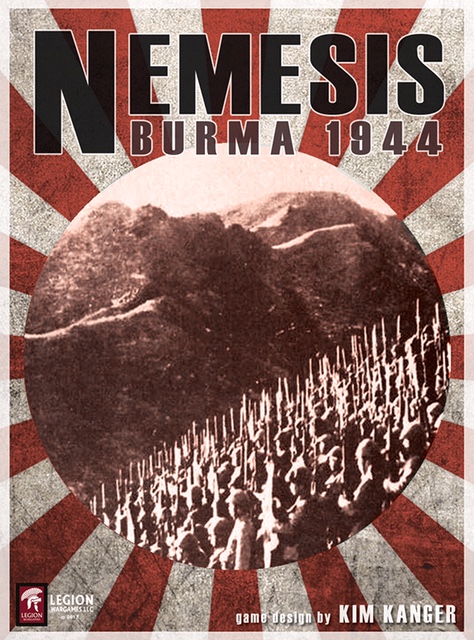
3. Nemesis Burma 1944 from Legion Wargames
Nemesis Burma 1944 from Legion Wargames is a fantastic wargame that focuses on the China-Burma-India Theater of World War II and deals with nonconventional warfare across the rugged, disease ridden back waters of Burma as the British and Americans fought against the Empire of Japan to kick them out of the area and begin winning back Southeast Asia. The game covers the Japanese and Allied campaigns in northern Burma that took place between March and August 1944. The game covers four fronts including to the west where Japanese units attacked into the borderlands of British India, to the north where US and Chinese troops under General Stilwell are pressing southwards, to the east into China where there are numerous Chinese divisions trying to force out the Japanese division in front of them and also in the center where we find Japanese and the British Chindit units chasing each other.
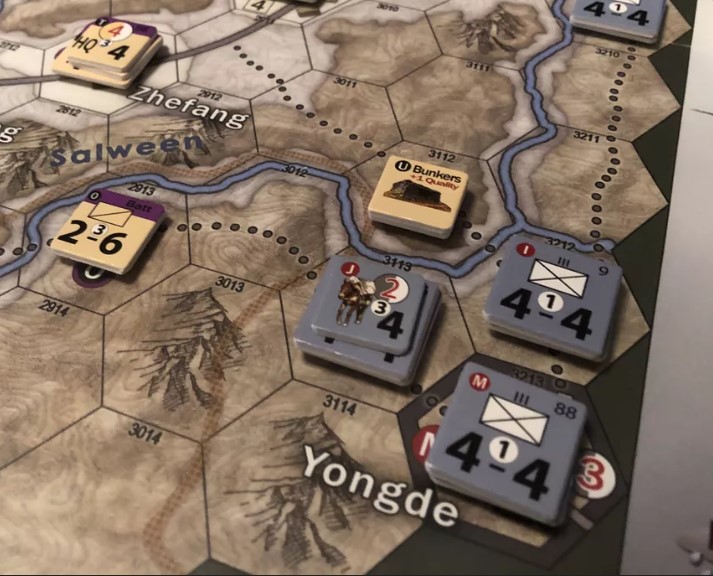

One of the best parts of the game was trying to maintain tenuous supply on the mountain passes and back trails of the area without the ability to use large trucks, airplane drops or shipping. In the game, there are several different types of Transport Units available to the players including small trucks and Headquarter units but also Mule counters. In the war, the allies also used elephants to fill this role but in the game the designer Kim Kanger had to draw the line somewhere and settled on using Mule counters. These Mule counters act as Transporters as they convey supply to the troops in the area as they move through the jungle to attack enemy positions. The players also have supply depots on the map with a range number on them. The Mule counters are used to extend the range of the supply depots by creating a chain of one or more transporters, each with a range number shown on their counters as well.
We really needed these Mules as being caught in the jungles of the CBI without proper supply meant your troops couldn’t attack or even properly defend. Trying to understand how best to utilize your transport assets is a key to the game and will require multiple plays to understand and be efficient.
If you are interested, we posted a review video of the game and you can watch it at the following link:

2. Almoravid: Reconquista and Riposte in Spain, 1085-1086 from GMT Games
Almoravid: Reconquista and Riposte in Spain, 1085-1086 is Volume II in Volko Ruhnke’s Levy & Campaign Series and takes the system from Nevsky’s frozen northeast frontier to medieval Latindom’s opposite corner. The same base rules show the muster of lords, their levy of forces and capabilities, and their command of armies on campaign across 11th-Century Spain. But al-Andalus was not Russia as the player’s lords will enjoy good Roman roads and gentler seasons but must bypass or smash against Iberia’s profusion of tough Moorish fortifications.
If you haven’t played any of the games in the Levy & Campaign Series, they are at their heart logistics games and as such the players will have to spend time assembling appropriate transportation assets such as Carts and even Mules. Yes, the game focuses again on the Mule, which has been a beast of burden for millennia and is key in this game as you have to supply armies across the inhospitable terrain of Spain. Carts or Mules can carry 1 Provender each across any Way during any Season. The difference between them is that the relatively less efficient Mules require more animals, so you have to Feed your Mules along with your Troops. But the advantage to Mules is that they can more readily get across the Passes than can Carts. It’s a less complicated logistical puzzle than in the harsh landscape of Nevsky but still presents a puzzle nonetheless.
Because Almoravid’s logistical rules are simpler in the above way, the designer Volko Ruhnke took the opportunity to add a little complication for more realistic Supply rules. In Almoravid, players need Transport for each Way to each Seat, when you are using more than one Seat. In Nevsky, you may recall, Transport could do double duty to more than one Supply Source. This was to make accounting less of a pain when you had to track multiple Transport types over different types of Ways to up to four Sources. The Mules are essential and create the most efficient means of supplying your troops.
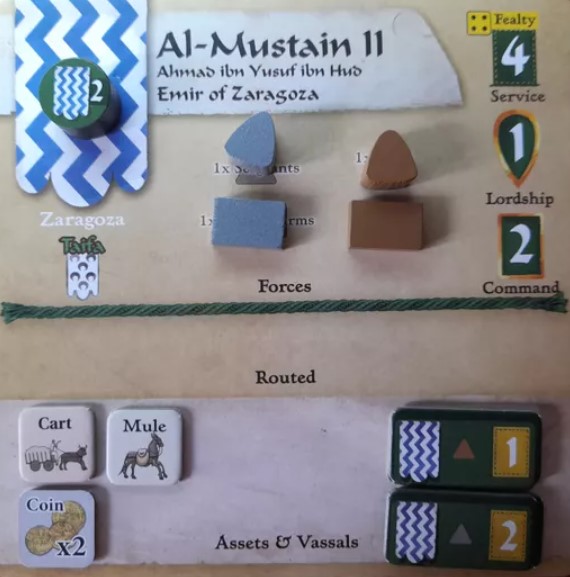
The Mules in Almoravid serve a vital purpose for the players and create some really interesting choices about how best to move Supply. They are also fairly cute as Iván Cáceres’s style really brings out their best side!
If you are interested, we posted an interview with the game’s designer Volko Ruhnke and you can read that at the following link: https://theplayersaid.com/2020/08/04/interview-with-volko-ruhnke-designer-of-almoravid-reconquista-and-riposte-in-spain-1085-1086-from-gmt-games/
If you are interested, we posted a review video of the game and you can watch it at the following link:
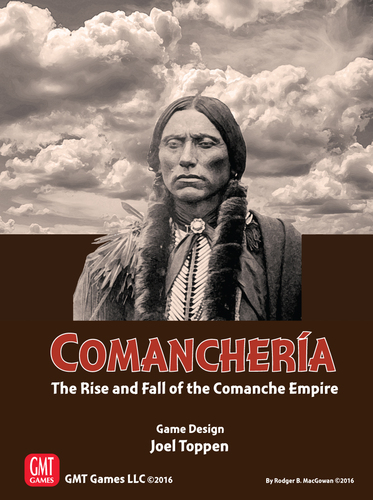
1. Comanchería: The Rise and Fall of the Comanche Empire from GMT Games
Comanchería: The Rise and Fall of the Comanche Empire is a solitaire wargame that was released in 2016 and is the second game in Joel Toppen’s First Nations Series. Like its predecessor Navajo Wars, Comanchería allows the player the opportunity to play from the Native American tribe’s point of view. In Comanchería, the player takes command of the Comanche nation. The player must drive hostile tribes from the southern plains, establish dominance over the region, set up trade networks with both friendly tribes and colonial powers, and finally defend all of this against relentless military and cultural attack.
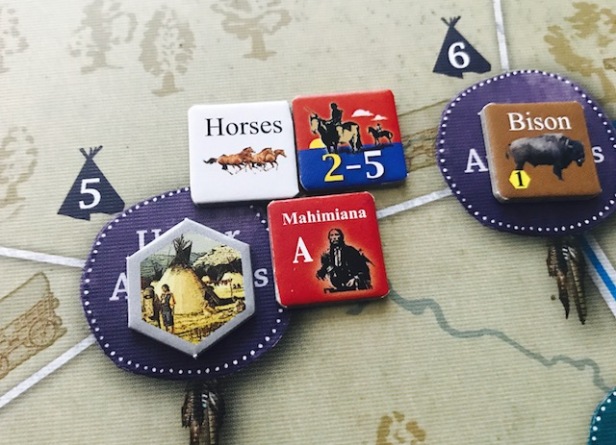
In the game, players can take various actions that allow them to activate their Bands located in various Ranchería and have their choice of performing Hunt, Move, Raid and Trade. When a Band is activated, they gain Movement Points equal to their movement allowance listed on the counter. In the picture shown above, the 3-4 Band has 4 movement allowance. As long as the player has Movement Points remaining, they can continue to take actions. If a Band contains extra Horses counters, these counters can be sacrificed or used in order to gain one additional Movement Point per counter for that Band but this is not necessarily recommended as you are losing your valuable resources. This is a fantastic use of the Horses counters in the game as the Comanche had advanced horsemanship skill that earned them the nickname “Horse Lords of the Plains.”
The player also needs to feed their families and they can take other actions that focus on animals such as Hunt. In order to do this, a player simply equips a Band with a Horses counter (as this Horses counter makes them more movable only requiring one Movement Point to move one space versus not having a Horses counter and requiring two MPs to move one space) and has the option of also bringing along their Mahimiana or Headman as it will make the action more efficient. The Band then must move into a space that is occupied by a Bison counter and simply spends 3 MP’s to Hunt and take possession of the counter. If a Band has a Mahimiana, the Hunt action will cost less Movement Points to take, dropping from 3 to 2 MP’s. The player then has the option of moving again to another location or using their remaining Movement Points to get back to their Ranchería. Players need to Hunt as they gain the meat that can then be used to Trade for goods with other Allied tribes in order to gain Trade Goods or Food tokens, which can provide a reroll of combat dice during a battle with an opposing War Column or the ability to increase the Ranchería’s population during the use of the Passage of Time action. At the start of the game, there are plenty of Bison counters found on the board but over time, through hunting and due to other cultures invading the Comanche lands this resource will disappear.
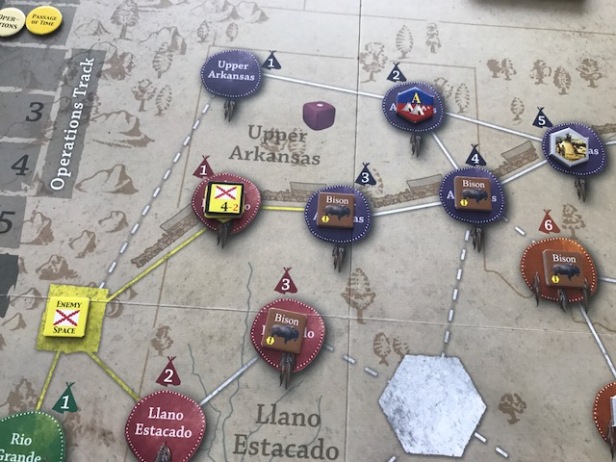
As you can see, Comanchería is a really interesting resource management puzzle as to which actions to take. You must focus on resource gathering in order to gain more and more powerful resources to be used to either improve Bands or gain additional Bands but also to increase your influence by placing additional Rancherías and removing your enemies from your territory. I appreciate the inclusion of the Horses and Bison counters in this game and feel that their inclusion are central to the game player.
If you are interested, I put together and posted a review video of the game and you can watch it at the following link:
So those were my 3 Best Games with…Animal Counters! and I hope that you enjoyed what I shared and also got into the spirit of the post and started thinking about games that you have played that use animals. What are your favorite games that used animal counters?
-Grant

The best game is ASL of course, with the cow counters in St. Mere Eglise campaign game.
LikeLiked by 1 person
Nice! I have not had the pleasure of playing ASL yet but we threaten to all the time. Thanks for sharing.
LikeLike
Grant, Don’t forget the recently published GMT game by Ed Beach, Border Reivers with 102 wooden sheep and horse meeples!
rich j.
LikeLiked by 1 person
Yep. I have played one game and really enjoyed it but I wanted to use wargames that used counters.
LikeLike
I have expected to see some Euro games like Wingspan or Ark Nova!
LikeLiked by 1 person
That is why I said Animal Counters….should have tipped you off that they were wargames.
LikeLike
DAK II has a counter for the Italian Saharian Camel Cavalry battalion with a drawing of a camel on it.
Campaign for North Africa has a counter for the same battalian (different ID) but alas with just the traditional cavalry symbol on it rather than any representation of a camel.
Hopefully it can be rectified when Decision Games (finally) releases its updated version of this classic. (a big opportunity here!)
LikeLiked by 1 person